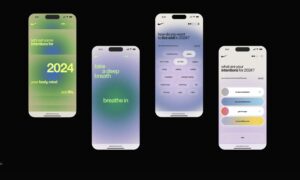Are you ready to unlock the secret to innovation? In a world driven by technology and constantly evolving user experiences, collaboration between designers and developers has become more crucial than ever before. From creating seamless interfaces to crafting cutting-edge software solutions, this dynamic partnership holds the key to unlocking groundbreaking ideas that can transform industries. J
Introduction
Collaboration between designers and developers is a crucial aspect of any successful project. In today’s fast-paced digital world, where technology is constantly evolving, it has become imperative for both designers and developers to work together in order to create innovative solutions that meet the needs of users. The traditional silos between these two roles have been broken down, as they are now working hand in hand to achieve a common goal: delivering high-quality products that not only look visually appealing but also function seamlessly.
The role of designers and developers has evolved significantly over the years. Designers are no longer just responsible for creating beautiful designs, but they also play a key role in understanding user needs and behaviors. On the other hand, developers are not just responsible for coding and programming; they are also involved in making design decisions based on technical feasibility. As a result, there has been an increasing overlap between these two roles, leading to more collaboration.
The benefits of collaboration between designers and developers are multifaceted. Firstly, it leads to better communication and understanding between teams. With regular communication channels established through collaboration, there is a greater exchange of ideas, which results in improved problem-solving abilities. This ultimately leads to more effective decision-making processes and faster project completion times.
The roles of designers and developers in the innovation process
Innovation is a key driving force for businesses to stay ahead in today’s fast-paced and ever-evolving market. It is the process of creating new or improved products, services, or processes to meet the changing needs of customers. While innovation can be sparked by various factors, the collaboration between designers and developers plays a crucial role in bringing these ideas to life.
Designers are responsible for conceptualizing and visualizing ideas that address user needs and solve problems. They use their creative skills to come up with innovative solutions that not only look visually appealing but also function effectively. Designers have a deep understanding of customer behavior and preferences, which enables them to create designs that resonate with the target audience.
On the other hand, developers are responsible for turning these designs into functional products or services. They possess technical expertise and knowledge of coding languages to bring the designers’ concepts to life. Developers work closely with designers to understand their vision and translate it into a tangible product that meets all technical requirements.
The roles of designers and developers may seem distinct, but they are intertwined when it comes to innovation. Collaboration between these two professionals is essential because each brings unique skills and perspectives to the table.
Designers bring creativity, empathy, user-centric thinking, and problem-solving skills, while developers offer technical expertise, analytical thinking, attention to detail, and the ability to execute complex tasks efficiently. When these two teams work together seamlessly during the innovation process, they can create groundbreaking solutions that exceed expectations.
One of the primary reasons why collaboration between designers and developers is crucial to innovation is because it promotes cross-pollination of ideas. Designers often have out-of-the-box thinking, while developers have a structured approach to problem-solving. When these different thought processes merge together through effective communication channels, new possibilities emerge.
Designers and developers play crucial roles in the innovation process. Their collaboration brings together creativity and technical expertise, resulting in innovative solutions that meet customer needs. Businesses should recognize the importance of this collaboration and foster a culture of teamwork to unlock their full potential for innovation.
The challenges of effective collaboration between designers and developers
Effective collaboration between designers and developers is crucial for the success of any project. However, it is not always easy to achieve. There are numerous challenges that can arise when trying to bring together the creative minds of designers and the technical expertise of developers.
One of the main challenges in collaboration between designers and developers is communication. Designers and developers often have different vocabularies and ways of thinking due to their distinct skill sets. This can lead to misinterpretation, misunderstandings, and ultimately delays in the project timeline.
Another challenge is differing priorities. Designers tend to focus on aesthetics, user experience, and creativity, while developers prioritize functionality, usability, and technical feasibility. This can create conflicts when one side’s priorities clash with the other’s.
Furthermore, there can be a lack of understanding or appreciation for each other’s roles. Designers may not fully understand the limitations and complexities involved in bringing their designs to life, while developers may underestimate the value of design in creating a successful product.
Time constraints can also pose a hurdle to effective collaboration between designers and developers. Both parties may have tight deadlines to meet, which can lead to rushed decisions or compromises being made that do not align with either party’s vision.
Additionally, there may be differences in the tools or software used by designers and developers, which can create compatibility issues and slow down collaboration efforts.
Benefits of collaboration for both designers and developers
Collaboration between designers and developers has become increasingly important in today’s fast-paced and constantly evolving world of technology. It is no longer enough for designers to create visually appealing designs or for developers to focus solely on writing code. The success of a project relies heavily on the ability of these two teams to work together seamlessly, leveraging each other’s strengths and expertise. In this section, we will explore the benefits that collaboration brings for both designers and developers.
For designers, collaborating with developers allows them to gain a deeper understanding of the technical aspects involved in bringing their design concepts to life. By working closely with developers, they can better understand the limitations and possibilities of different technologies, which in turn helps them create more practical and feasible designs. This not only results in a more efficient development process but also leads to higher-quality end products.
Moreover, collaboration allows designers to see their designs from a different perspective. Developers bring their own unique insights and ideas based on their technical knowledge, which can help improve the overall design. By incorporating feedback from developers early on in the design process, designers can make necessary changes or improvements before any significant development work has been done, saving time and resources in the long run.
On the other hand, collaboration also brings numerous benefits for developers. Working closely with designers gives them a clearer picture of what needs to be achieved and why it is essential from a design standpoint. This understanding helps them write more effective code that not only meets functional requirements but also aligns with the overall design vision.
Additionally, when developers collaborate with designers throughout the project’s lifecycle, they are more likely to catch potential issues or bugs early on before they become major problems later down the line. This ensures smoother development cycles and reduces rework or delays caused by misunderstandings or miscommunications between teams.
Strategies for successful collaboration
Effective collaboration between designers and developers is crucial for unlocking innovation in any project. With their unique skill sets, these professionals have the power to create groundbreaking products and services that can revolutionize industries. However, successful collaboration doesn’t happen by chance; it requires a well-thought-out strategy.
In this section, we will explore some strategies for successful collaboration between designers and developers.
1. Establish clear communication channels: The first step towards successful collaboration is establishing clear communication channels between the designer and developer. This includes setting up regular meetings or check-ins to discuss progress, expectations, and any challenges faced. It’s also essential to define roles and responsibilities clearly so that each team member knows what is expected of them.
2. Foster Mutual Respect and Understanding: Designers and developers often come from different backgrounds with varying approaches to problem-solving. It’s important to foster mutual respect and understanding between both parties to bridge this gap. Each team member should value the other’s expertise and be open to learning from one another.
3. Involve Both Parties in the Ideation Process: Collaboration should start from the very beginning of a project—during the ideation process. Involving both designers and developers in brainstorming sessions allows for a diverse range of ideas that incorporate technical feasibility with creativity.
4. Embrace Agile Methodology: The agile methodology promotes close collaboration between cross-functional teams, including designers and developers, through its iterative approach. This allows for frequent communication, adaptability to changes, and quick problem-solving.
5. Utilize Project Management Tools: There are numerous project management tools available today that can facilitate effective collaboration between designers and developers. These tools allow for easy sharing of files, tracking progress, assigning tasks, creating schedules, etc., making teamwork more efficient.
6. Encourage Feedback: Feedback is an essential aspect of any collaborative effort as it helps identify areas for improvement and promotes growth within the team members individually as well as collectively. Both designers and developers should be open to giving and receiving constructive feedback, which can lead to better results.
7. Set realistic deadlines: unrealistic deadlines can create unnecessary pressure on both designers and developers, leading to a breakdown in collaboration. It’s crucial to set realistic timelines that take into account the complexities of the project, allowing both parties to work together at a comfortable pace without compromising on quality.
8. Celebrate Successes Together: Collaboration requires teamwork, and it’s essential to acknowledge and celebrate successes together as a team. This boosts morale, creates a positive working environment, and strengthens the relationship between designers and developers.
Real-life examples of successful collaborations between designers and developers
Collaboration between designers and developers is crucial for the success of any project. When these two teams work together seamlessly, it can result in remarkable innovations and groundbreaking products. In this section, we will discuss some real-life examples of successful collaborations between designers and developers.
1. Apple Inc.
Apple Inc. is known for its sleek and user-friendly products, which are a result of seamless collaboration between designers and developers. One such example is the development of the iPhone. The late Steve Jobs, co-founder of Apple, believed in the importance of bringing design and technology together to create revolutionary products. The team at Apple worked closely with industrial designers to develop a visually appealing phone that also had advanced technological features.
2. Airbnb
Airbnb is one of the most popular online marketplace platforms for vacation rentals, with over 7 million listings worldwide. The company’s success can be attributed to its collaborative approach to product development. Designers and developers at Airbnb work together from the initial stages to ideate and come up with innovative solutions that enhance the user experience on their platform.
3. Facebook
Facebook has transformed the way people connect and share information globally through social media networking. The company’s design team works hand in hand with its engineering team to continuously improve user interface designs while seamlessly incorporating new technological advancements into their platform.
Conclusion
Web design and development are continuously evolving, and collaboration between designers and developers is crucial for successful outcomes. These real-life examples demonstrate the importance of effective teamwork, communication, and a shared vision between designers and developers in creating innovative and user-friendly products.



































